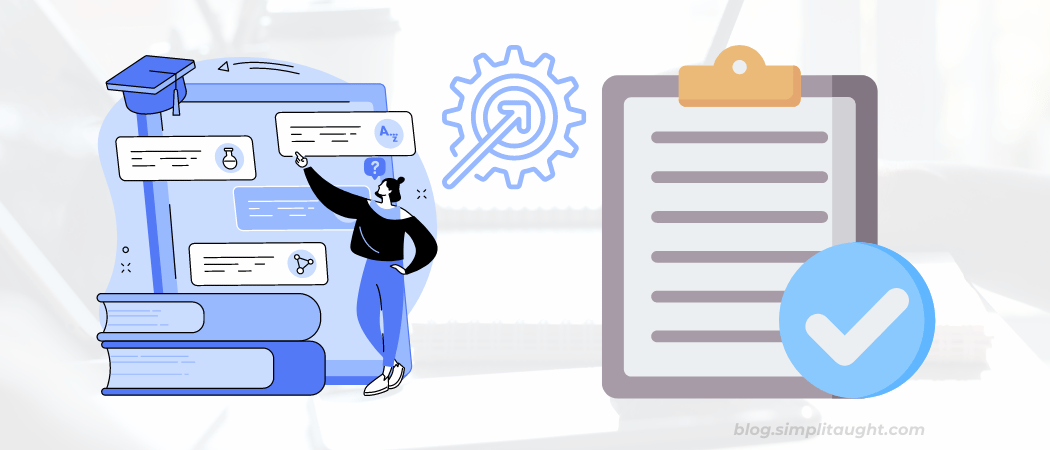Personalized learning has been gaining popularity in online education for quite some time. It is an instructional approach that tailors instruction, content, and teaching methods to meet individual students’ preferences and needs. In addition, this technique emphasizes the creation of learner-centered teaching and learning strategies that promote collaborative and self-directed learning. Wondering what Personalized Learning Environments are and how they impact learning.
What is Personalized Learning?
Generally, personalized learning refers to a collection of learning and teaching activities, strategies, and models responsive to students’ needs and goals. There are many understandings of customized learning within the framework.
Some define it as a teaching practice that supports learners in ways that best meet their needs and interests. With this approach, learning activities, content, spaces, pace, and any other educational component are designed to cater to every student’s needs. It doesn’t necessarily mean creating individualized teaching plans for each learner but instead setting up pathways for students to experience learning.
Likewise, personalized learning encompasses a shift in the traditional teaching paradigm from an instructor-centered approach to a student-centered approach. Rather than being passive receivers of information, learners are encouraged to participate actively by setting goals, tracking progress, and reflecting on their learning process.
Personalized learning has many benefits, and it improves specific student outcomes. Let’s dig into the learner outcomes enhanced by customized learning approaches.
Personalized Learning Environments Improving Student Outcomes
Until the research is fully developed, the advantages of personalized education are self-evident to many learners. Successful assessment outcomes, learning motivation, and increased student engagement have all been linked to customized learning.
Here are a few examples of the advantages of personalized learning environments and how those benefits impact student achievements.
Soft Skills Development
Personalized learning environments do more than encourage student learning; they also create opportunities for learners to develop soft skills. For example, regarding learning pace and content, learners develop independence. Moreover, by utilizing group activity opportunities, learners build collaborative skills. Additionally, encouraging self-direction in education, and using suitable parameters, ensures that learners get better at problem-solving.
Beyond grades, personalized learning environments ensure that learners are ready to take the next step by entering the workforce or continuing their education. In addition, such environments also foster skills like critical thinking, active listening, social perceptiveness, and problem-solving. These soft skills play a crucial role in success in higher education. Hence, educators set students up for success by promoting personalized learning environments focusing on developing soft skills.
Enhances Student Engagement
Enhanced student engagement is an excellent result of a personalized learning environment. Lettings students take control of their learning journey allows them to pursue subjects that interest them, increasing the chances that they will remain engaged throughout their course.
In addition, instructors can use ed-tech tools to assess how engaged students are in their learning. Eventually, it can aid teachers in identifying at-risk learners so that they can intervene and get students back on track.
Increases Digital Literacy
One advantage of utilizing technology to facilitate personalized learning environments is getting students acquainted with technology at an early age. We live in a digital age, and yet there is a gap in digital capabilities. According to Information Technology & Innovation Fund research, 70% of US jobs demand medium-high digital skills. Higher digital capabilities also tend to result in higher wages. If we determine learner success by future achievement, i.e., whether they want to be successful in their professional endeavors, digital skills can be associated with increased achievement.
Besides career prospects, there are other benefits of digitally literate learners. It is a reality that many children today grow up surrounded by technology and usually understand how to use it intuitively. However, this does not necessarily equate to digital literacy. Learners must learn how to identify and handle issues like mis-disinformation, and cyberbullying.
While not all definitions of personalized learning mention technological tools, many still do. Educating learners to be digitally literate assists them in succeeding in life and future opportunities.
Offers Enrichment Opportunities
Personalization and enrichment go hand in hand. There are opportunities for learners who are excelling in a particular subject to get more chances to learn and forge ahead beyond the assigned learning material. Personalized learning environments and pathways ensure learners can progress at their own pace. Students who fall behind can have more time for their assignments, while those acing their studies can take additional assignments to challenge themselves.
Providing learners the opportunity for enrichment can aid in reducing learning loss and enhancing academic achievement. Thanks to technology, students in need can access enrichment programs and personalized learning environments. In addition, research indicates that enrichment opportunities for young learners from low-income families resulted in better educational outcomes.
Final Thoughts!
Personalized learning is an instructional approach that customizes educational content and teaching techniques to meet the needs of each student. This approach promotes self-directed and collaborative learning by emphasizing the development of student-centered teaching techniques and strategies.
Hence, it is evident that personalized learning is the future of education and can help students succeed from early childhood to their professional lives. Therefore, the key to building such environments is flexibility and adapting quickly to changes. It will help you take advantage of what works best for each learner while ensuring that your students are engaged and progressing toward their academic goals.





